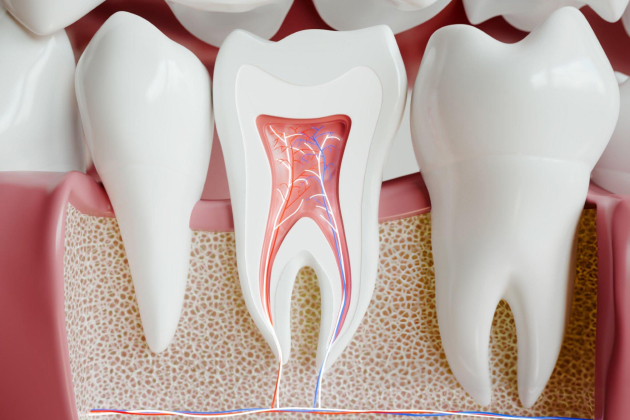The Truth Behind Root Canals

Uncovering the Reality of Root Canals
The Importance of Root Canals
Root canal treatments are a common type of endodontic procedure used to treat infections or inflammation in the inner tissue of a tooth's root canal. This can be caused by cracks, chips, deep decay, or repeated dental work. Sometimes, the pulp may become infected or inflamed without any visible damage.
There are other signs that may indicate the need for a root canal, such as severe pain while biting or chewing, pimples on the gums, temperature sensitivity, swollen or tender gums, or darkened gums. It is important to seek medical attention promptly if experiencing any of these symptoms, as endodontists specialize in addressing tooth pain.
“As endodontists are experts in addressing tooth pain, patients should seek medical attention immediately if they begin experiencing severe pain while biting or chewing.”
Safety and Root Canals
Each year, millions of teeth are saved through root canal treatments. The American Association of Endodontists (AAE) estimates that over 15 million of these procedures are performed in the United States annually, averaging over 41,000 root canal treatments per day.
This common procedure is proven to be safe and effective, with predictable results. Leaving a tooth untreated can be more dangerous than undergoing a root canal treatment. Root canal treatments are typically needed when bacteria inside the tooth cause an infection or abscess, which can lead to bone loss, drainage issues, and swelling in the face, head, or neck. Root canal treatments can effectively address these issues.
“The American Association of Endodontists (AAE) estimates that over 15 million of these procedures are performed in the United States every year.”
Dispelling Common Misconceptions About Root Canals
- Root canal treatment is painful.
- Root canal treatment causes illness.
- Tooth extraction is preferable to root canal treatment.
Modern technology and anesthetics have made root canal treatment as comfortable as getting a cavity filled. Root canal treatments effectively eliminate toothaches by addressing the source of infection or inflammation, and endodontists are skilled in pain management.
Claims linking root canal treatment to illness are based on outdated and discredited research. There is no valid scientific evidence supporting the idea that root canal treatment can lead to future health issues.
It is generally recommended to save a natural tooth whenever possible, as it is often safer, less painful, and more cost-effective than extraction. Preserving a natural tooth reduces the risk of further infections, and root canal treatments are not as painful as commonly believed. Additionally, tooth extraction may not always be the cheaper option when considering the overall long-term benefits.
“While root canal treatment may have been painful in the past, modern technology and anesthetics have made the experience no more discomforting than getting a cavity filled.”
Important Information About Root Canals
- Breakdown of the filling material, allowing bacteria to re-enter the inner tooth
- More root canals in a tooth than expected, leaving one or more uncleaned
- Issues with the restoration, permitting bacteria to enter the inner tooth
- Undetected crack in the tooth’s root
“Though root canal treatments are a safe and common procedure, some complications may occasionally occur.”
Pros and Cons of Root Canals
There are numerous benefits to undergoing root canal treatment, such as pain relief, halting the spread of infection, treating dental decay, and preventing further damage to the tooth pulp. By saving the tooth, root canal procedures avoid the need for unnecessary tooth extraction and help maintain the patient's bite. They also shield neighboring teeth from infection and strain, with results that can last a lifetime when properly maintained.
However, there are potential drawbacks to consider as well. These are often necessary compromises, such as the possibility of the treated tooth being weaker post-procedure. This can be addressed by capping the tooth with a crown for added protection. Patients may also experience discomfort, toothaches, or the risk of reinfection. Additionally, there is a chance that the doctor may overlook hidden roots or canals, requiring retreatment in the future. Selecting the right endodontist and following all post-treatment instructions can help reduce the likelihood of complications.




